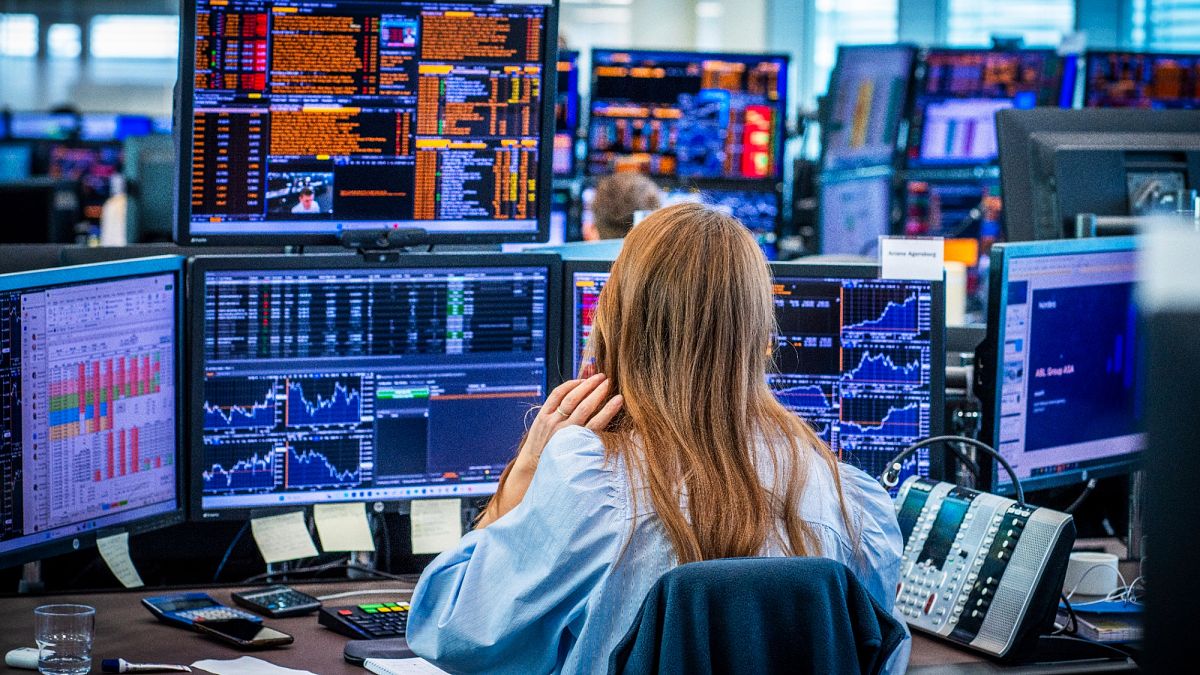Published on
At the time of writing (13:05 CEST), all major European indexes were in the red after China said the US “severely violated” the terms of their recent trade agreement. Market participants also considered the impact of US President Donald Trump’s plan to double current tariffs on steel and aluminium from 25% to 50% from this Wednesday.
The EURO STOXX 50 was down 0.68%, Germany’s DAX fell 0.48%, while France’s CAC 40 declined 0.63%.
“Donald Trump has upset markets once again,” Russ Mould, investment director at AJ Bell, said in an email note sent to Euronews.
“Doubling import taxes on steel and aluminium, and aggravating China once again, mean we face a situation where uncertainty prevails. Trump’s continuous moving of the goal posts is frustrating for businesses, governments, consumers and investors.
“Equity markets were down across Europe and Asia, with futures prices implying a similar pattern when Wall Street opens for trading on Monday. Unsurprisingly, gold got a boost as investors returned to safe-haven assets.”
US markets end May on flat note
Meanwhile, US markets ended May on a flat note, although for the month as a whole each of the main indices rose strongly following hopes of tariff reconciliations.
“Such optimism will face an immediate challenge as June begins, with comments over the weekend keeping the aggressive rhetoric in place. The latest broadsides from the White House were primarily directed at China and the EU, with both threatening a response in kind to any further tariff hikes,” Richard Hunter, head of markets at Interactive Investor, said in an email note to Euronews.
However, he noted, back on the ground, there were some promising economic signs with the Federal Reserve’s preferred measure of inflation, the Personal Consumption Expenditures index coming in lower than expected and with a consumer sentiment index showing higher than had been feared.
“However, such respite could prove short-lived as the latter was largely predicated on an apparent softening of hostilities between the US and China in the latter part of the month, which has since evaporated. There will be a further signal on the state of the economy at the end of the week, with non-farm payrolls expected to show that 130,000 jobs will have been added in May compared to 177,000 the previous month and that the 4.2% unemployment rate will remain unchanged.
“In the meantime, US markets have repaired much of the damage wrought over the last few months although sentiment remains fragile. The Dow Jones and Nasdaq are down by 0.6% and 1% respectively in the year-to-date, while the 0.5% gain for the benchmark S&P500 has in part been driven by a resurgence of the mega cap technology trade,” Hunter said.
Asia markets under pressure
In addition to contending with the weekend comments, Asian markets fell foul of geopolitical uncertainty following the latest Russia-Ukraine developments, with the Hang Seng under pressure based on the renewed likely tariff hikes on aluminium and steel.
“Mainland China was closed for a public holiday, which could leave some losses being stored up ahead of its reopening, likely exacerbated by a report which showed a further contraction in factory activity over the last month,” Hunter added.

